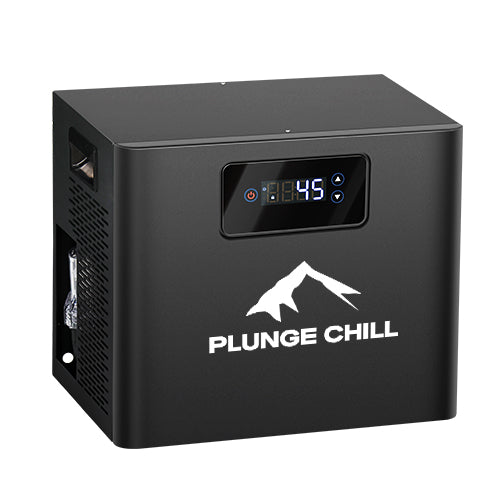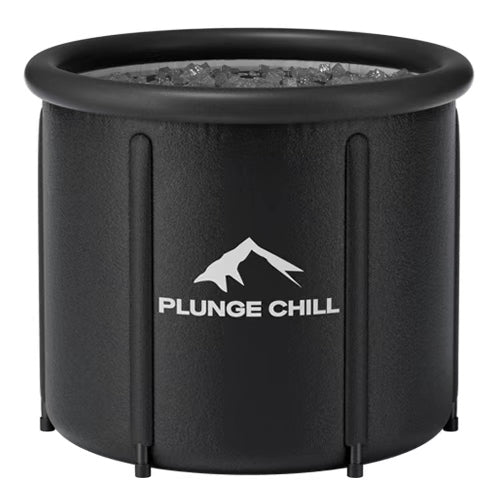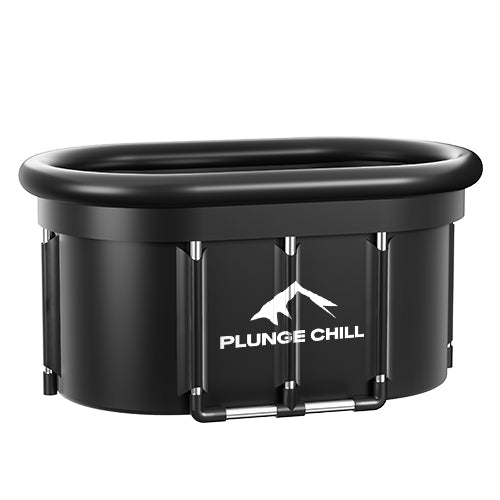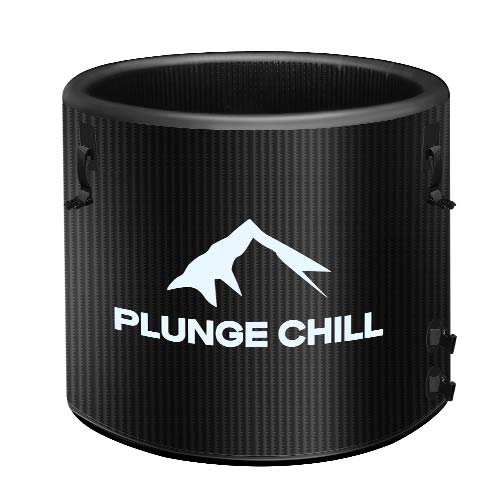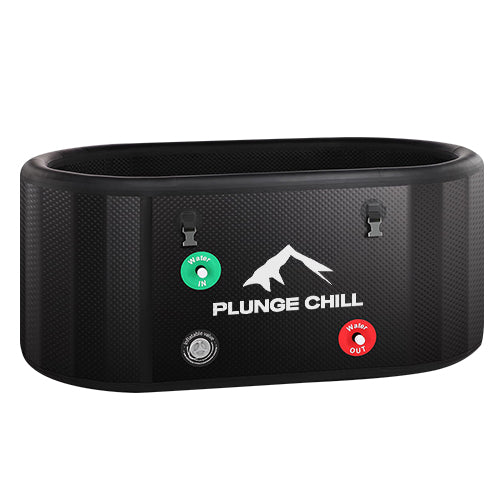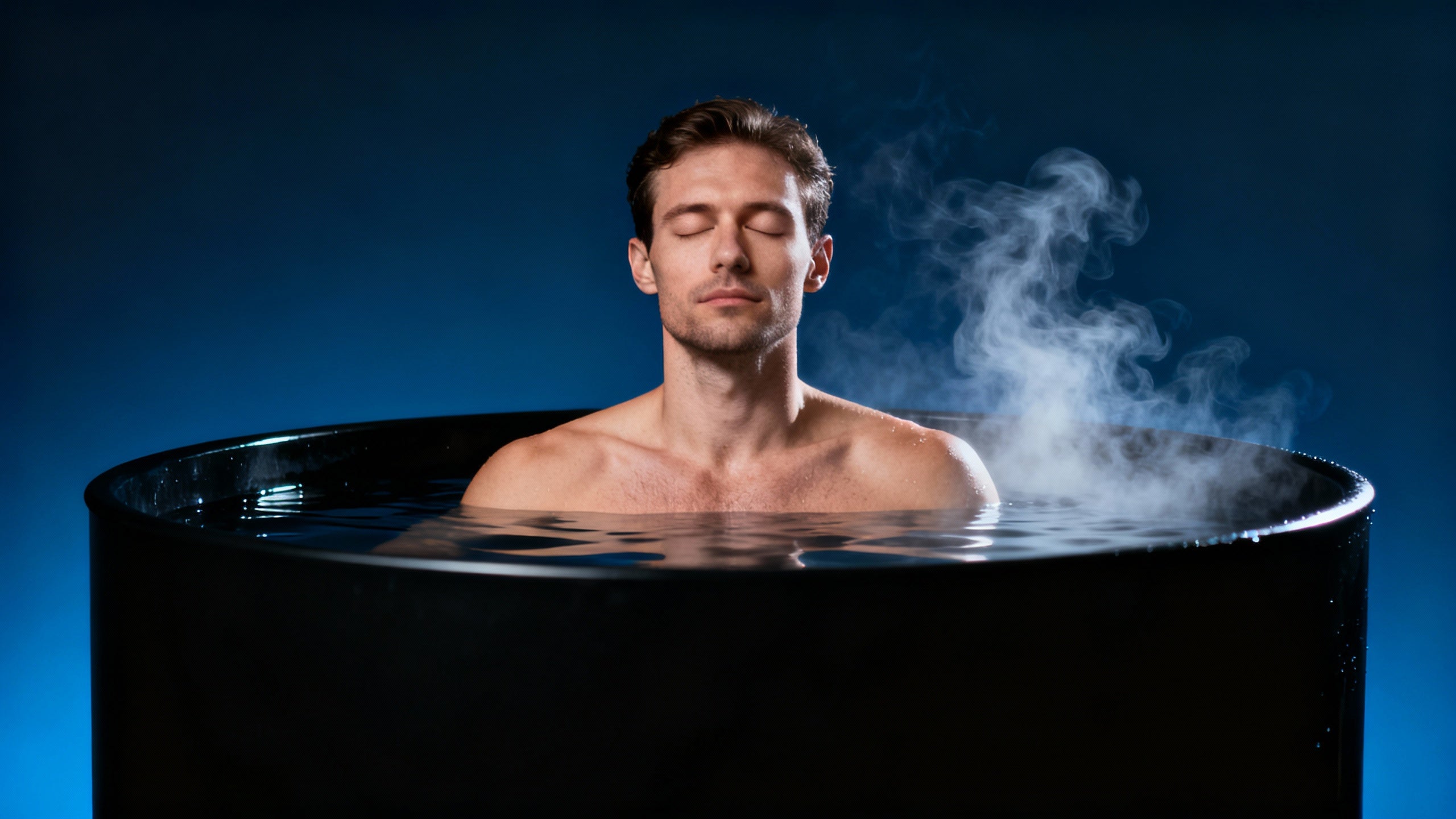Cold baths and meditation have traveled parallel paths in wellness culture: one leverages a controlled dose of environmental stress; the other cultivates deliberate calm. Put together, they form a pragmatic, physiology‑aware routine that many people find both focusing and restorative. The science around cold‑water immersion (often called CWI) has grown in the last few years, and while the research on pairing it with meditation is still emerging, we can already map a sensible way to integrate these practices. This article assembles what high‑quality studies suggest about cold exposure, explains how meditation can complement it mechanistically, and offers grounded, safety‑first advice for anyone curious about combining the two. Where the evidence is preliminary or inferred, that is noted explicitly with confidence levels so you can calibrate expectations.
What We Mean by “Cold Baths” and “Meditation”
In the research literature, cold‑water immersion is typically defined as partial or full‑body submersion up to the chest in water at or below 59℉ for at least 30 seconds. Trials have used temperatures from roughly 44.6℉ to 59℉ and exposures ranging from brief dips to sessions of several minutes. Some laboratory studies have used about 68℉ for five minutes to examine mood and brain‑network changes. This is the same family of practice people colloquially call an ice bath, cold plunge, cold shower, or open‑water swim.
Meditation in this piece refers to breath‑centered practices such as mindful breathing, diaphragmatic breathing, and open monitoring. While meditation itself is a broad category, the relevant feature here is its ability to foster nonreactivity to sensations and to steady the breath during arousal. This specific claim is an inference from widely reported effects of breath‑focused meditation and the physiology of stress regulation; confidence is high that it reduces perceived stress, but the exact size of its effect will vary and depends on technique, frequency, and individual factors.
What the Evidence Says About Cold Baths Alone
A recent systematic review and meta‑analysis in PLOS One pooled 11 randomized trials with 3,177 participants and found time‑dependent effects from cold‑water immersion. Inflammation markers rose immediately after immersion and remained elevated at one hour, consistent with a short‑lived inflammatory response. Perceived stress decreased at twelve hours, but not immediately, nor at one, twenty‑four, or forty‑eight hours. Across the included randomized studies there were no significant immediate changes to measured immune function; narrative evidence elsewhere suggests possible longer‑term benefits such as lower sickness absence with cold showers, but those longer‑term findings are not yet firmly established in randomized trials.
University of Oregon researchers reported that a single fifteen‑minute immersion reduced heart rate, blood pressure, and cortisol in college students, with participants reporting better moods three hours later. They measured slight shifts in vascular shear stress patterns by ultrasound and proposed this as a potential pathway for cardiovascular benefit. Harvard Health summarized similar themes across 11 studies, noting that stress reductions showed up with a delay, sleep improvements were reported in men but not women, quality‑of‑life gains were seen with cold showers, and mood and immunity changes were inconsistent across heterogeneous protocols. In another controlled study using resting‑state fMRI, a five‑minute head‑out immersion at about 68℉ increased positive affect and decreased negative affect in healthy adults, while also increasing connectivity among salience, default mode, frontoparietal, and visual networks; these neural changes tracked with improvements in reported energy and alertness.
Safety‑forward guidance appears consistently across clinical and academic sources. Healthcare institutions such as the University of Utah Health emphasize entering water slowly to manage the initial cold shock response, practicing controlled breathing, keeping sessions brief, never plunging alone, and stopping immediately with numbness, chest pain, or uncontrollable shivering. People with cardiovascular disease, uncontrolled high blood pressure, Raynaud’s phenomenon, neuropathy, or who are pregnant should consult a clinician before attempting cold exposure. Cold immediately after strength training can blunt some molecular signals for muscle growth; the Mayo Clinic Health System and sports‑science summaries recommend timing cold exposure away from hypertrophy‑focused sessions if long‑term gains are a priority.

Where Meditation Fits: Physiology and Practice
The first seconds of cold exposure often trigger a cold shock response: breathing rate spikes, heart rate increases, and there is an urge to gasp. Full‑body immersion drives sympathetic arousal, while cool facial immersion can elicit the diving reflex, a parasympathetic mechanism mediated by the trigeminal and vagus nerves that slows heart rate and nudges the system toward calm. Meditation and breath training are unusually well matched to this moment. By practicing relaxed attention and paced exhalation, you can down‑regulate hyperventilation, prevent breath‑holding, and shift the perception of “threat” toward “sensation” without diminishing situational awareness.
The broader meditation literature points to reductions in perceived stress and improved emotion regulation, but there are fewer head‑to‑head trials specifically evaluating meditation inside cold exposure. The synergy described here therefore rests on mechanistic plausibility and parallel lines of evidence: meditation reliably trains attention and breath under stress, and cold exposure provides a controllable stressor whose outcomes (such as delayed stress reduction) may be amplified when the physiological arousal is guided rather than resisted. This synergy claim is an inference with moderate confidence and calls for direct randomized studies.

Why Combine Them? Mechanisms of Synergy
The cold bath provides a hormetic stimulus that spikes arousal, catecholamines, and respiration, then resolves. Meditation provides a learned response that keeps the prefrontal “brakes” engaged as the body accelerates. Together, they work in three phases. Before immersion, a minute or two of slow nasal breathing and brief body scanning primes nonreactivity. During immersion, maintaining a soft gaze and lengthening the exhale reduces the probability of panic breathing and allows you to reach the “uncomfortable but safe” zone quickly. After immersion, a short seated practice while you rewarm consolidates the experience as challenge met rather than distress survived, aligning with evidence that stress reduction manifests hours later, not immediately.
A second possible synergy involves timing. Since the meta‑analysis indicates stress reduction peaks around twelve hours after exposure, placing the plunge earlier in the day and pairing it with meditation later that morning or midday may harmonize physiology and psychology. This timing speculation is an inference with moderate confidence; it is consistent with the time course reported in the PLOS One analysis, but the additive value of meditation at specific intervals has not yet been directly tested.
Protocols You Can Try Safely, Step by Step
For healthy beginners, direct immersion in very cold water is not necessary to explore benefits. A practical on‑ramp is to end a warm shower with a cool phase for thirty seconds and build toward one to three minutes over several sessions, using calm nasal inhalations and longer, slower exhalations. If you prefer a tub, water around 68℉ for a few minutes is a workable starting point and is consistent with controlled fMRI research in novices. As tolerance grows, many protocols place the target range near 50–59℉ for short exposures, with total weekly exposure time accumulated across several sessions. A popular science guideline suggests about eleven minutes of cold exposure per week in two to four sessions; this is a practice recommendation from a Stanford neuroscientist rather than a clinical consensus, so treat it as a ceiling to test, not a quota to hit.
During the plunge, let the initial shock be your cue to widen the attention field rather than to tense up. Relax the jaw and shoulders, keep the chest buoyant, and guide respiration with a steady rhythm that emphasizes the exhale. When you finish, rewarm gradually with dry clothing and light movement; if you feel lightheaded, avoid stepping directly into very hot water, as some medical guidance advises caution about sudden heat after cold in that context. Track your response the rest of the day, because perceived stress tends to fall much later, not in the first hour.

Athletic Context and Timing
If you lift weights with hypertrophy goals, avoid cold immersion immediately after training. Several sports‑medicine sources note that post‑exercise cold exposure can blunt anabolic signaling and reduce muscle growth over time, even if it decreases delayed‑onset muscle soreness in the short term. A simple workaround is to reserve plunges for rest days, skill sessions, or endurance days, or to leave a long buffer after strength training. For athletes who rely on repeated bouts of performance in a tournament setting, the short‑term recovery benefits may be strategically helpful, but the long‑term training blocks should be planned with the trade‑off in mind.

Risks, Contraindications, and Sensible Precautions
Cold water is a powerful stimulus. The primary acute risks are cold shock with disordered breathing, arrhythmias in susceptible individuals, and the possibility of hypothermia if exposure is excessive. Enter the water slowly, never plunge alone, and abort the session with any chest pain, confusion, numbness that climbs rather than recedes, or uncontrollable shivering. People with cardiovascular disease, uncontrolled hypertension, Raynaud’s phenomenon, neuropathy, or who are pregnant should seek medical clearance before attempting cold immersion. Psychological responses vary as well; for some, the jolt of cold can spike anxiety rather than relieve it. Meditation can help, but it is not a safeguard against medical risk. If you are pursuing treatment for depression or anxiety, consider cold exposure, if at all, as an adjunct to evidence‑based care rather than a replacement. Ohio State University’s Wexner Medical Center has emphasized that there is no rigorous scientific evidence that cold water alone produces lasting, clinically meaningful improvements in depression, despite encouraging anecdotes and case reports.
Practical Gear, Care, and Buying Tips
An effective routine does not require a dedicated plunge tub. A normal bath with ice or bags of frozen water is a low‑cost starting point. A reliable digital thermometer matters more than fancy hardware, because safety is anchored to accurate temperature and time. A simple timer you can see without removing your hands from the water steadies the experience. If you live in a cold climate, neoprene booties or gloves help manage hand and foot pain without materially changing the stimulus to the torso. High‑end plunge tanks with refrigeration and filtration are convenient but expensive; the Mayo Clinic Health System notes that some models can cost many thousands of dollars, so consider goals, budget, and space before investing. Clean any tub or container regularly to keep biofilm and odors at bay; this is general hygiene advice with high confidence rather than a research finding.
For meditation, you need only a quiet corner and a way to sit comfortably for several minutes after the plunge. A cushion that supports an upright spine and a light blanket for rewarming improve compliance. Breath‑pacing apps or a metronome sound can be useful in the first sessions; over time, the breath can be guided without props.
Jewelry‑Specific Notes for Cold Baths and Meditation
If you wear jewelry, remove it before cold immersion and store it safely. Rings can feel looser as fingers vasoconstrict, raising the chance of loss in the water, and abrupt temperature swings can stress adhesives used in some settings, mountings, or watch seals. Some gemstones and treatments are more vulnerable to thermal shock than others, and rapid cycling from cold to hot may exacerbate microfractures or affect plating over time. This section is based on general materials and bench‑jewelry considerations rather than specific studies on cold‑water immersion, so treat it as a precautionary inference with moderate confidence. For meditation beads, avoid soaking natural fiber threads or wood in water and allow any moisture to dry fully before storage.
What Results to Expect and When
Pattern recognition across studies suggests that cold immersion creates an acute arousal spike with short‑term inflammatory increases and a delayed stress‑reduction window many hours later. In healthy adults, head‑out immersion around 68℉ has been associated with increased positive affect and reduced negative affect shortly after exposure, while a single fifteen‑minute plunge in college students reduced heart rate, blood pressure, and cortisol and improved mood at three hours. A meta‑analysis found the strongest stress signal at twelve hours after exposure, not at the earlier checkpoints, and it did not detect consistent improvements in mood across heterogeneous trials. Mood and cognitive effects in the minutes after immersion can include a sense of vigor and alertness for many people, but they are not universal and can flip to discomfort if the water is too cold or the exposure too long. Immune changes appear modest and variable in the short term, although a narrative line of evidence points to lower sickness absence with routine cold showers. Case reports have described substantial mental‑health improvements with open‑water swimming under supervision, and those stories are motivating, but they do not substitute for randomized trials. Meditation layers onto this picture by helping regulate the first minute of shock and by shaping the narrative of the challenge, which can make the delayed stress benefits more likely to be noticed and repeated.
Key Outcomes and Time Course at a Glance
|
Outcome |
Direction |
Typical Timing Window |
Evidence Type and Source |
Notes and Nuance |
|
Inflammation markers |
Increase |
Immediate and at 1 hour |
Randomized trials pooled in PLOS One |
Short‑lived rise consistent with hormesis; monitor soreness. |
|
Perceived stress |
Decrease |
Around 12 hours |
Randomized trials pooled in PLOS One |
Not significant immediately, 1h, 24h, or 48h. |
|
Positive affect and alertness |
Increase |
Minutes after 5 minutes at ~68℉ |
Pre/post imaging and affect study in healthy adults |
Head‑out immersion; novices; short session. |
|
HR, BP, cortisol |
Decrease |
Hours after a 15‑minute plunge |
University of Oregon study; Journal of Thermal Biology |
Mood improved at 3 hours; shear stress shifts observed. |
|
Sleep and quality of life |
Mixed improvements |
Over weeks |
Harvard Health summary of 11 studies |
Men reported better sleep; quality‑of‑life gains with cold showers. |
|
Immunity |
No significant acute change |
Immediate and 1 hour |
Pooled RCTs in PLOS One |
Longer‑term cold showers linked to less sickness absence narratively. |
|
Strength and hypertrophy |
Possible blunting if used post‑lift |
Weeks to months |
Sports medicine reports and Mayo Clinic Health System |
Time cold away from hypertrophy blocks if muscle gain is a goal. |

An Example Week That Balances Cold and Calm
A sustainable rhythm for healthy adults might cluster brief cold exposures on non‑lifting days and link each session to a short meditation. One workable approach is to place a cool shower finish on two mornings and a slightly colder, brief tub immersion on a weekend morning when you are not in a rush. Each exposure is followed by five minutes of seated breathing while rewarming. This pattern accumulates time across the week toward a modest total without overreaching. Exposure and timing should be adjusted if sleep, soreness, or work demands conflict; the aim is consistency and safety, not heroics. This scheduling guidance is an inference with moderate confidence, aligning with delayed stress benefits and sports‑medicine cautions.

Takeaway
Cold‑water immersion is not a cure‑all, but carefully dosed, it can be a useful lever for stress physiology with a characteristic delayed payoff. Meditation is a natural companion, because it gives you a trainable way to meet the first minute of shock and to metabolize the challenge into calm rather than tension. The strongest evidence today is about what cold alone does and does not do, with randomized data supporting a short‑term inflammatory rise, a delayed drop in perceived stress, and mixed results on mood and immunity. The combination with meditation is physiologically coherent and practically sound, even if it has not yet been trialed extensively as a pair. Start warm and brief, perfect your breathing, and expand only as your body and life logistics allow. If you have cardiovascular or other medical conditions, get clearance first. If your goals include muscle growth, keep cold away from your lifting. If you wear jewelry, take it off before you plunge.
FAQ
How cold should the water be, and how long should I stay in?
Most studies place “cold” at or below 59℉ for short exposures, but laboratory work has also shown mood benefits after five minutes around 68℉. Beginners can start warmer and briefer, then titrate down as tolerance develops. One popular science recommendation suggests totaling about eleven minutes per week spread over two to four sessions; treat that as an upper bound to experiment with rather than a target you must hit.
Can cold baths replace therapy or medication for depression or anxiety?
No. Academic medical sources emphasize that there is no rigorous evidence that cold exposure alone produces lasting, clinically meaningful improvements in depression. A compelling case report described remission with supervised open‑water swimming, but a single case cannot stand in for randomized trials. If you are in treatment, discuss cold exposure with your clinician and treat it, at most, as an adjunct.
When should I schedule cold exposure if I also strength train?
Avoid immersions immediately after hypertrophy‑focused lifting, because repeated post‑lift cold can blunt molecular signals for muscle growth. Use cold on rest days, on endurance or skill days, or leave a long buffer after lifting. Meditation can be practiced every day without that trade‑off.
Will the combination help immunity?
In pooled randomized trials, immune markers did not show significant immediate changes, although narrative data report lower sickness absence with routine cold showers over time. The combination with meditation is reasonable for overall stress regulation, which indirectly supports immune health, but specific immune benefits from the pair have not been established.
Is face‑only immersion worthwhile?
Yes. Brief facial immersion in cold water can activate the diving reflex and downshift arousal, making it a fast distress‑tolerance tool. It pairs well with slow exhalations and is a gentle entry point for people who are not ready for full‑body immersion.
Should I wear my jewelry in the bath or during meditation?
It is safer to remove jewelry before cold immersion to reduce the chance of loss from finger shrinkage and to avoid thermal shock to mounts, adhesives, or certain stones. This is a precaution based on general material behavior rather than direct research on cold exposure; confidence is moderate. For meditation, beads should be kept dry so threads and wood are not degraded.
References
- https://lms-dev.api.berkeley.edu/cold-tub-therapy
- https://www.health.harvard.edu/staying-healthy/research-highlights-health-benefits-from-cold-water-immersions
- https://digitalcommons.liberty.edu/cgi/viewcontent.cgi?article=8439&context=doctoral
- https://pubmed.ncbi.nlm.nih.gov/39879231/
- https://wexnermedical.osu.edu/our-stories/cold-water-therapy-for-depression
- https://lifestylemedicine.stanford.edu/jumping-into-the-ice-bath-trend-mental-health-benefits-of-cold-water-immersion/
- https://news.uoregon.edu/content/cold-plunging-might-help-heart-health-new-research-suggests
- https://healthcare.utah.edu/healthfeed/2023/03/cold-plunging-and-impact-your-health
- https://www.browardhealth.org/blogs/health%20benefits%20and%20risks%20of%20cold%20plunges
- https://journals.plos.org/plosone/article?id=10.1371/journal.pone.0317615
Disclaimer
By reading this article, you acknowledge that you are responsible for your own health and safety.
The views and opinions expressed herein are based on the author's professional expertise (DPT, CSCS) and cited sources, but are not a guarantee of outcome. If you have a pre-existing health condition, are pregnant, or have any concerns about using cold water therapy, consult with your physician before starting any new regimen.
Reliance on any information provided in this article is solely at your own risk.
Always seek the advice of a qualified healthcare provider with any questions you may have regarding a medical condition, lifestyle changes, or the use of cold water immersion. Never disregard professional medical advice or delay in seeking it because of something you have read in this article.
The information provided in this blog post, "The Synergistic Effects of Cold Baths and Meditation Practices," is for informational and educational purposes only. It is not intended to be a substitute for professional medical advice, diagnosis, or treatment.
General Health Information & No Medical Advice
